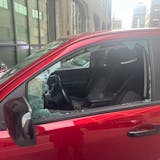Minneapolis and St. Paul are two of the coldest cities in North America, yet our street corners, bus stops, doorways, storefronts and sidewalks seem to be designed for eternal summer.
When was the last time you sat outside in the winter sun to have a cup of coffee? Given the psychological windchill of our downtowns, city neighborhoods and suburban retail areas, doing so would seem crazy.
But Edmonton, Alberta, a wind-whipped Canadian city even colder than our own, is applying strategies to create a "patio culture" year-round.
Approved in 2016, the Edmonton Winter Design Guidelines outline simple design solutions to make the streetscape more enjoyable in winter, including blocking prevailing winds and downdrafts, maximizing sun exposure through orientation and niches, introducing color in buildings, signs and vegetation and adding warmer lighting.
Even better, these guidelines call for upgrades that are inexpensive, adaptable to varying locations and relatively easy to explain.
While the metro area has undertaken no coordinated plan to make our cities more winter-friendly, we do have pockets, small plazas and street corners that provide respite. They may be humble, have been altered over time and weren't planned for such a purpose. Yet taken as a whole, they provide a rich catalog of winter design strategies that we should embrace and employ on a larger scale.
Hennepin Avenue's pocket parks
Stretching diagonally across much of Minneapolis, Hennepin Avenue grew up along a path leading to Lake Harriet. It's going-against-the-grain layout created several triangular spaces at the street crossings around Franklin Avenue. With the advent of the streetcar, this segment of Hennepin quickly grew commercialized, with two- and three-story commercial buildings fronting small, almost accidental plazas.


